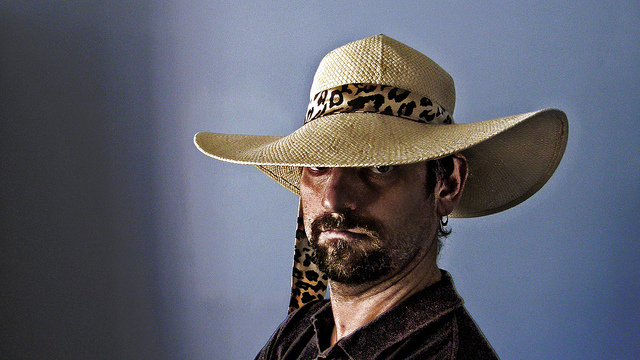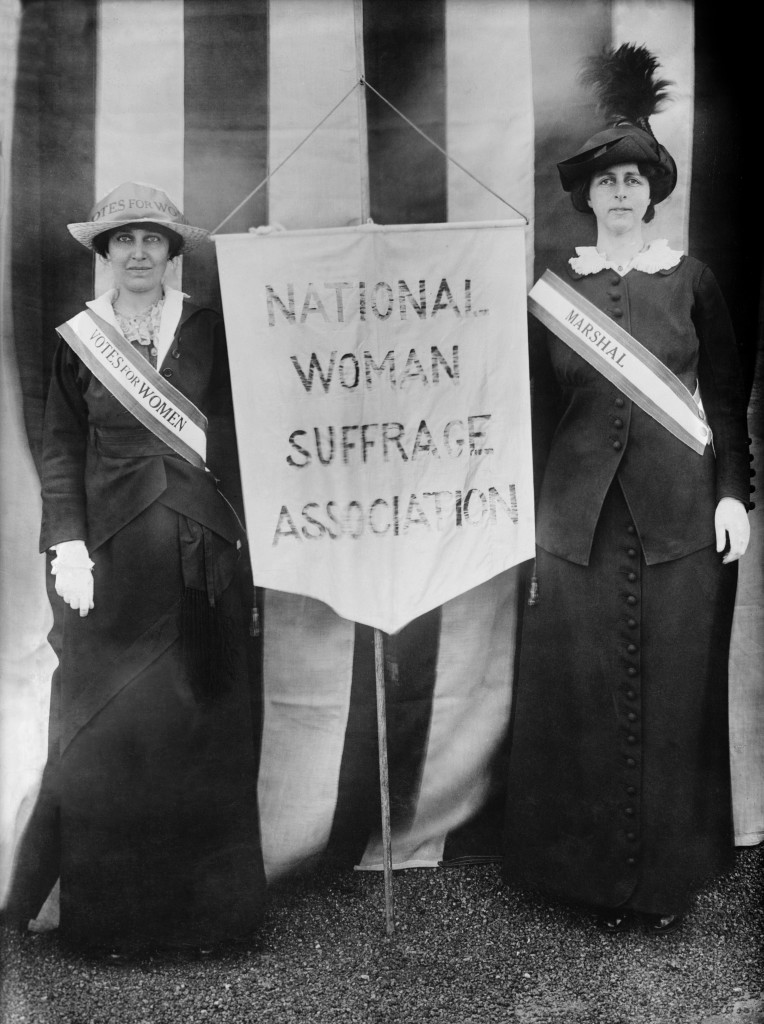Posts Tagged ‘Fear’
Step-Wise Learning
 At every meeting you have a chance to move things forward or hold them back. When a new idea is first introduced it’s bare-naked. In its prenatal state, it’s wobbly and can’t stand on its own and is vulnerable to attack. But since it’s not yet developed, it’s impressionable and willing to evolve into what it could be. With the right help it can go either way – die a swift death or sprout into something magical.
At every meeting you have a chance to move things forward or hold them back. When a new idea is first introduced it’s bare-naked. In its prenatal state, it’s wobbly and can’t stand on its own and is vulnerable to attack. But since it’s not yet developed, it’s impressionable and willing to evolve into what it could be. With the right help it can go either way – die a swift death or sprout into something magical.
Early in gestation, the most worthy ideas don’t look that way. They’re ugly, ill-formed, angry or threatening. Or, they’re playful, silly or absurd. Depending on your outlook, they can be a member of either camp. And as your outlook changes, they can jump from one camp to the other. Or, they can sit with one leg in each. But none of that is about the idea, it’s all about you. The idea isn’t a thing in itself, it’s a reflection of you. The idea is nothing until you attach your feelings to it. Whether it lives or dies depends on you.
Are you looking for reasons to say yes or reasons to say no?
On the surface, everyone in the organization looks like they’re fully booked with more smart goals than they can digest and have more deliverables than they swallow, but that’s not the case. Though it looks like there’s no room for new ideas, there’s plenty of capacity to chew on new ideas if the team decides they want to. Every team can spare and hour or two a week for the right ideas. The only real question is do they want to?
If someone shows interest and initiative, it’s important to support their idea. The smallest acceptable investment is a follow-on question that positively reinforces the behavior. “That’s interesting, tell me more.” sends the right message. Next, “How do you think we should test the idea?” makes it clear you are willing to take the next step. If they can’t think of a way to test it, help them come up with a small, resource-lite experiment. And if they respond with a five year plan and multi-million dollar investment, suggest a small experiment to demonstrate worthiness of the idea. Sometimes it’s a thought experiment, sometimes it’s a discussion with a customer and sometimes it’s a prototype, but it’s always small. Regardless of the idea, there’s always room for a small experiment.
Like a staircase, a series of small experiments build on each other to create big learning. Each step is manageable – each investment is tolerable and each misstep is survivable – and with each experiment the learning objective is the same: Is the new idea worthy of taking the next step? It’s a step-wise set of decisions to allocate resources on the right work to increase learning. And after starting in the basement, with step-by-step experimentation and flight-by-flight investment, you find yourself on the fifth floor.
This is about changing behavior and learning. Behavior doesn’t change overnight, it changes day-by-day, step-by-step. And it’s the same for learning – it builds on what was learned yesterday. And as long at the experiment is small, there can be no missteps. And it doesn’t matter what the first experiment is all about, as long as you take the first step.
Your team will recognize your new behavior because it respectful of their ideas. And when you respect their ideas, you respect them. Soon enough you will have a team that stands taller and runs small experiments on their own. Their experiments will grow bolder and their learning will curve will steepen. Then, you’ll struggle to keep up with them, and you’ll have them right where you want them.
image credit — Rob Warde
There is no failure, there is only learning.
 You’re never really sure how your new project will turn out, unless you don’t try. Not trying is the only way to guarantee certainty – certainty that nothing good will come of it.
You’re never really sure how your new project will turn out, unless you don’t try. Not trying is the only way to guarantee certainty – certainty that nothing good will come of it.
There’s been a lot of talk about creating a culture where failure is accepted. But, failure will never be accepted, and nor should it be. Even the failing forward flavor won’t be tolerated. There’s a skunk-like stink to the word that cannot be cleansed. Failure, as a word, should be struck from the vernacular.
If you have a good plan and you execute it well, there can be no failure. The plan can deliver unanticipated results, but that’s not failure, that’s called learning. If the team runs the same experiment three times in a row, that, too, is not failure. That’s “not learning”. The not learning is a result of something, and that something should be pursued until you learn its name and address. And once named, made to go away.
When the proposed plan is reviewed and improved before it’s carried out, that’s not failure. That’s good process that creates good learning. If the plan is not reviewed, executed well and generates results less than anticipated, it’s not failure. You learned your process needs to change. Now it’s time to improve it.
When a good plan is executed poorly, there is no failure. You learned that one of your teams executed in a way that was different than your expectations. It’s time to learn why it went down as it did and why your expectations were the way they were. Learning on all fronts, failing on none.
Nothing good can come of using the f word, so don’t use it. Use “learn” instead. Don’t embrace failure, embrace learning. Don’t fail early and often, learn early and often. Don’t fail forward (whatever that is), just learn.
With failure there is fear of repercussion and a puckering on all fronts. With learning there is openness and opportunity. You choose the words, so choose wisely.
Image credit – IZATRINI.com
Celebrating Six Years of Blog Posts
 Today marks six years of blog posts published every Wednesday evening. 300 weeks in a row and I haven’t skipped, forgot, or repeated. All written without an editor, though you knew that by the typos and grammar stumbles.
Today marks six years of blog posts published every Wednesday evening. 300 weeks in a row and I haven’t skipped, forgot, or repeated. All written without an editor, though you knew that by the typos and grammar stumbles.
It’s a challenge to write every week, but it’s worth it. Writing demands thinking things through, which can be difficult especially if you want to write clearly, but thinking things through creates knowledge. Deep knowledge.
Over the last year I wrote a lot about self-awareness, mindfulness and intentions. I’m better for my meditations, and through osmosis, so are some of the people closest to me. I expect you’ll hear more on these themes over the next year.
I’ve put myself out there with my writing. With some posts I’m afraid to hit the publish key, and those are the posts that matter. My fear is the signal there’s something important in the post. I hope to write more of those.
I strive to write clearly and densely and avoid buzzwords. Innovation is the buzzword that trips me up. But like He-Who-Shall-Not-Be-Named, I’ll see if I can avoid calling it by name. (And never three times in the same post.) And my call-to-arms will be clearer, plainer, denser.
I’m not sure what next year will bring, but I hope it will be 52 more posts.
Thanks for reading.
Mike
Image credit – Bart.
The Chief Do-the-Right-Thing Officer – a new role to protect your brand.
 Our unhealthy fascination with ever-increasing shareholder value has officially gone too far. In some companies dishonesty is now more culturally acceptable than missing the numbers. (Unless, of course, you get caught. Then, it’s time for apologies.) The sacrosanct mission statement can’t save us. Even the most noble can be stomped dead by the dirty boots of profitability.
Our unhealthy fascination with ever-increasing shareholder value has officially gone too far. In some companies dishonesty is now more culturally acceptable than missing the numbers. (Unless, of course, you get caught. Then, it’s time for apologies.) The sacrosanct mission statement can’t save us. Even the most noble can be stomped dead by the dirty boots of profitability.
Though, legally, companies can self-regulate, practically, they cannot. There’s nothing to balance the one-sided, hedonistic pursuit of profitability. What’s needed is a counterbalancing mechanism of equal and opposite force. What’s needed is a new role that is missing from today’s org chart and does not have a name.
Ombudsman isn’t the right word, but part of it is right – the part that investigates. But the tense is wrong – the ombudsman has after-the-fact responsibility. The ombudsman gets to work after the bad deed is done. And another weakness – ombudsman don’t have equal-and-opposite power of the C-suite profitability monsters. But most important, and what can be built on, is the independent nature of the ombudsman.
Maybe it’s a proactive ombudsman with authority on par with the Board of Directors. And maybe their independence should be similar to a Supreme Court justice. But that’s not enough. This role requires hulk-like strength to smash through the organizational obfuscation fueled by incentive compensation and x-ray vision to see through the magical cloaking power of financial shenanigans. But there’s more. The role requires a deep understanding of complex adaptive systems (people systems), technology, patents and regulatory compliance; the nose of an experienced bloodhound to sniff out the foul; and the jaws of a pit bull that clamp down and don’t let go.
Ombudsman is more wrong than right. I think liability is better. Liability, as a word, has teeth. It sounds like it could jeopardize profitability, which gives it importance. And everyone knows liability is supposed to be avoided, so they’d expect the work to be proactive. And since liability can mean just about anything, it could provide the much needed latitude to follow the scent wherever it takes. Chief Liability Officer (CLO) has a nice ring to it.
[The Chief Do-The-Right-Thing Officer is probably the best name, but its acronym is too long.]
But the Chief Liability Officer (CLO) must be different than the Chief Innovation Officer (CIO), who has all the responsibility to do innovation with none of the authority to get it done. The CLO must have a gavel as loud as the Chief Justice’s, but the CLO does not wear the glasses of a lawyer. The CLO wears the saffron robes of morality and ethics.
Is Chief Liability Officer the right name? I don’t know. Does the CLO report to the CEO or the Board of Directors? Don’t know. How does the CLO become a natural part of how we do business? I don’t know that either.
But what I do know, it’s time to have those discussions.
Image credit – Dietmar Temps
Recalibrating Your Fear
 Everyone is looking for that new thing, that differentiator, that edge. The important filtering question is: Has it been done before? If it has been done before it cannot be a new thing (that’s a rule), so it’s important to limit yourself to things that have not been done. Sounds silly to say, but with today’s hectic pace sometimes that distinction is overlooked.
Everyone is looking for that new thing, that differentiator, that edge. The important filtering question is: Has it been done before? If it has been done before it cannot be a new thing (that’s a rule), so it’s important to limit yourself to things that have not been done. Sounds silly to say, but with today’s hectic pace sometimes that distinction is overlooked.
Once your eyeballs are calibrated, it pretty easy to see the vital yet-to-be-done work. But calibration is definitely needed because things don’t look as they seem. Here are a few examples to help you calibrate.
“It can’t be done.” This really means is it was tried some time ago by someone who doesn’t work here anymore and we’ve forgotten why, but the one experiment that was run did not work. This a good indication of fertile ground. Someone a long time ago thought it was important enough to try and it still has not been done successfully. And, new materials and manufacturing processes have been created and opened up new design space. Give it a try.
“That will never work.” See above.
“You can’t do that.” This means you (and, likely your industry) have a policy that has blocks this new idea. It may not be the best idea, but since policy prohibits it, you have the design space all to yourself if you want it. (That is, of course, if you want to compete with no one.) Likely there are no physical constraints, just the emotional constraints you created with your policy. It’s all yours, if you try it.
“No one will buy that.” This means no one offers a product like that. It means your industry doesn’t understand it because you or your competitors don’t sell anything like it. Though Marketing knows the inherent uncertainty, they don’t know the market potential. But you know you’re onto something. Try it.
“That’s just a niche market.” This means there’s a market that’s buying your product even though you’ve spent no time or energy to develop that market. It’s an accidental market. It’s small because it’s young and because you (and your competition) haven’t invested in it nor have developed an unique new product for it. The growth is all yours if you try.
Organizations create blocking mechanisms and tricky language to protect themselves from the new-and-different because the new-and-different are scary. But organizations desperately need new-and-different. And for that they desperately need to do things that haven’t been done.
The first step is to recognize the fertile design space and untilled markets your fear has created for you.
Image credit — Jordan Oram
Skillful and Unskillful
 I used to believe others were responsible for my problem, now I believe I am responsible. The turning point came when I was struggling with a stressful situation a friend gave me some simple advice. He said “Look inside.” For some reason, that was enough for me to start my transformation.
I used to believe others were responsible for my problem, now I believe I am responsible. The turning point came when I was struggling with a stressful situation a friend gave me some simple advice. He said “Look inside.” For some reason, that was enough for me to start my transformation.
I used to compare myself to others. It caused me great pain because I judged myself as inferior. Over time I learned that others compared themselves to me and felt the same way. Also, I learned that success brings problems of its own, namely worry and anxiety around losing what “success” has brought. Though I still sometimes feel inferior, I’ve learned to recognize the symptoms, and once I call them by name, I can move forward.
I used to care too much about money. Though I still care about money, I care more about time.
I used to wrestle with the past and worry about the future. Now I sit in the present, and I like it better. I still slip sometimes, but I catch myself pretty quickly.
I used to be largely unaware of my lack of awareness. Now that I’ve learned to be more aware of it, I’m closer to the people I care about. And I’m aware that I’m just getting started.
I used to want more of everything. Now I have enough and I want to enjoy it.
I used to want to climb the corporate ladder, now I want to do amazing work.
I used to judge my younger self though my older self’s eyes. That was unskillful. I’ve realized that as a younger person my intensions were good, just as they are today. And, I’ve learned that perfection is an unattainable goal and that sometimes I forget.
I used to think that I had to do everything myself. Now I get great joy from helping others do things they thought they couldn’t.
I used to think of myself as a steamroller and I was proud of it. Now I’m a behind-the-scenes conductor who is far more effective and much happier.
I used to be afraid to share my inner thoughts and feelings, but I’m getting better at that.
Image credit – Jai Kapoor
Innovation isn’t a thing in itself.
 Innovation isn’t a thing in itself, and it’s not something to bolster for the sake of bolstering.
Innovation isn’t a thing in itself, and it’s not something to bolster for the sake of bolstering.
Innovation creates things (products, services, business models) that are novel, useful and successful. It’s important to know which flavor to go after, but before that it’s imperative to formalize the business objective. Like lean or Six Sigma, innovation is a business methodology whose sole intention is to deliver on the business objective. The business objective is usually a revenue or profit goal, and success is defined by meeting the objective. Successful is all about meeting the business objective and successful is all about execution.
There are a lot of things that must come together for an innovation to be successful. For an innovative product here are the questions to answer: Can you make it, certify it, market it, sell it, distribute it, service it, reclaim it? As it happens, these are the same questions to answer for any new product. In that way, innovative products are not different. But because innovation starts with novel, with innovative products the answers can be different. For an innovative product there are more “no’s” and for each no there’s a reason that starts with a C: constraint, capacity, capability, competitor, cooperation, capital. And the business objective cannot be achieved with closing the gaps.
After successful, there’s useful. Like any work based on a solid marketing methodology, innovation must deliver usefulness to the customer. Innovation or not, strong marketing is strong marketing and strong marketing defines who the customer is, how they’ll use the new service, and how they’ll benefit – the valuable customer outcome (VCO.) But with an innovative service it’s more difficult to know who the customer is, how they’ll use the service and if they’ll pay for it. (That’s the price of novelty.) But in most other ways, an innovative service is no different than any other service. Both are successful because they deliver usefulness customers, those customers pay money for the usefulness and the money surpasses the business objective.
Innovation is different because of novelty, but only in degree. Continuous improvement projects have novelty. Usually, it’s many small changes consistently applied that add up to meaningful results, for example waste reduction, improved throughput and product quality. These projects have novelty, but the novelty is the sum of small steps, all of which stay close to known territory.
The next rung on the novelty ladder is discontinuous improvement which creates a large step change in goodness provided to the customer. (Think 3X improvement.) The high degree of novelty creates broader uncertainty. Will the customer be able to realize the goodness? Will the novelty be appealing to a set of yet-to-be-discovered customers? Will they pay for it? It is worth doing all that execution work? Will it cannibalize other products? The novelty is a strong divergence from the familiar and with it comes the upside of new customer goodness and the downside of the uncertainty.
The highest form of novelty is no-to-yes. No other product on the planet could do it before, but the new innovative one can. It has the potential to create new markets, but also has the potential to obsolete the business model. The sales team doesn’t know how to sell it, the marketers don’t know how to market it and the factory doesn’t know how to make it. There new technology is not as robust as it should be and the cost structure may never become viable. There’s no way to predict how competitors will respond, there’s no telling if it will pass the regulatory requirements. And to top it off, no one is sure who the customer is or if anyone will it. But, if it all comes together, this innovation will be a game-changer.
Innovation is the same as all the other work, except there’s more novelty. And with that novelty comes more upside and more uncertainty. With novelty, too much of a good thing isn’t wonderful. Sufficient novelty must be ingested to meet the business objective, and a bit more for the long term to stay out in front.
Be clear about business objectives, deliver usefulness to customers and use novelty to make it happen. And call it whatever you want.
Image credit – Agustin Rafael Reyes
Serious Business
 If you’re serious about your work, you’re too serious. We’re all too bound up in this life-or-death, gotta-meet-the-deadline nonsense that does nothing but get in the way.
If you’re serious about your work, you’re too serious. We’re all too bound up in this life-or-death, gotta-meet-the-deadline nonsense that does nothing but get in the way.
If you’re into following recipes, I guess it’s okay to be held accountable to measuring the ingredients accurately and mixing the cake batter with 110% effort. When your business is serious about making more cakes than anyone else on the planet, it’s fine to take that seriously. But if you’re into making recipes, serious doesn’t cut it. Coming up with new recipes demands the freedom of putting together spices that have never been combined. And if you’re too serious, you’ll never try that magical combination that no one else dared.
Serious is far different than fully committed and “all in.” With fully committed, you bring everything you have, but you don’t limit yourself by being too serious. When people are too serious they pucker up and do what they did last time. With “all in” it’s just that – you put all your emotional chips on the line and you tell the dealer to “hit.” If the cards turn in your favor you cash in in a big way. If you bust, you go home, rejuvenate and come back in the morning with that same “all in” vigor you had yesterday and just as many chips. When you’re too serious, you bet one chip at a time. You don’t bet many chips, so you don’t lose many. But you win fewer.
The opposite of serious is not reckless. The opposite of serious is energetic, extravagant, encouraging, flexible, supportive and generous. A culture of accountability is serious. A culture of creativity is not.
I do not advocate behavior that is frivolous. That’s bad business. I do advocate behavior that is daring. That’s good business. Serious connotes measurable and quantifiable, and that’s why big business and best practices like serious. But measurable and quantifiable aren’t things in themselves. If they bring goodness with them, okay. But there’s a strong undercurrent of measurable for measurable’s sake. It’s like we’re not sure what to do, so we measure the heck out of everything. Daring, on the other hand, requires trust is unmeasurable. Never in the history of Six Sigma has there been a project done on daring and never has one of its control strategies relied on trust. That’s because Six Sigma is serious business. Serious connotes stifling, limiting and non-trusting, and that’s just what we don’t need.
Let’s face it, Six Sigma and lean are out of gas. So is tightening-the-screws management. The low hanging fruit has been picked and Human Resources has outed all the mis-fits and malcontents. There’s nothing left to cut and no outliers to eliminate. It’s time to put serious back in its box.
I don’t know what they teach in MBA programs, but I hope it’s trust. And I don’t know if there’s anything we can do with all our all-too-serious managers, but I hope we put them on a program to eliminate their strengths and build on their weaknesses. And I hope we rehire the outliers we fired because they scared all the serious people with their energy, passion and heretical ideas.
When you’re doing the same thing every day, serious has a place. When you’re trying to create the future, it doesn’t. To create the future you’ve got to hire heretics and trust them. Yes, it’s a scary proposition to try to create the future on the backs of rabble-rousers and rebels. But it’s far scarier to try to create it with the leagues of all-too-serious managers that are running your business today.
Image credit — Alan
The Fear of Being Judged
 “Here – I made this.” Those are courageous words. When you make something no one has made and you show people you are saying to yourself – “I know my work will be judged, but that’s the price of putting myself out there. I will show my work anyway.” I think the fear of being judged is enemy number one of creativity, innovation, and living life on your own terms. If I had ten dollars of courage in my pocket I’d spend it to dampen my fear of being judged.
“Here – I made this.” Those are courageous words. When you make something no one has made and you show people you are saying to yourself – “I know my work will be judged, but that’s the price of putting myself out there. I will show my work anyway.” I think the fear of being judged is enemy number one of creativity, innovation, and living life on your own terms. If I had ten dollars of courage in my pocket I’d spend it to dampen my fear of being judged.
No one has ever died from the fear of being judged, but right before you show your new work, share your inner feelings or show your true self, is sure feels like you’re going to be the exception. The fear of being judged is powerful enough to generate self-limiting behavior and sometimes can completely debilitate. It’s vector of unpleasantness is huge.
At a lower level, the fear of being judged is the fear someone will think of you differently than you want them to. It’s a fear they’ll label you with a scarlet letter you don’t want to own. This mismatch is the gradient that drives the fear. If you reduce the gradient you reduce the fear and the self-censorship.
No one can label you without your consent, and if you don’t consent there is no gradient. If you think the scarlet letter does not fit you, it doesn’t. No mismatch. When someone tries to hand you a gift and instead of taking it from them you let it drop to the floor, it’s not your gift. If you don’t accept their gift there is no gradient. But there is a gradient because you think the scarlet letter may actually fit and the gift may actually be yours. You create your fear because you think they may be right.
In the end it’s all about what you think about yourself. If your behavior is skillful and you know it, you will not accept someone else’s judgment and there’s no fear-fueling gradient . If your approach is purposefully thoughtful, you will not consent to labeling. If you know your intentions are true, there can be no external mismatch because there is no internal mismatch.
No one can be 100% skillful, purposeful, thoughtful and intentional. But directionally, behaving this way will reduce the gradient and the fear. But the fear will never go away, and that’s why we need courage. Be skillful and afraid and do it anyway. Be thoughtful and scared and do what scares you. Be true to your heart’s intention and just courageous as you need to be to wrestle your fears to the ground.
Image credit – Paul Townsend
It’s time to make a difference.
 If on the first day on your new job your stomach is all twisted up with anxiety and you’re second guessing yourself because you think you took a job that is too big for you, congratulations. You got it right. The right job is supposed to feel that way. If on your first day you’re totally comfortable because you’ve done it all before and you know how it will go, you took the job for the money. And that’s a terrible reason to take a job.
If on the first day on your new job your stomach is all twisted up with anxiety and you’re second guessing yourself because you think you took a job that is too big for you, congratulations. You got it right. The right job is supposed to feel that way. If on your first day you’re totally comfortable because you’ve done it all before and you know how it will go, you took the job for the money. And that’s a terrible reason to take a job.
You got the job because someone who knew what it would take to get it done believed you were the right one to do just that. This wasn’t charity. There was something in it for them. They needed the job done and they wanted a pro. And they chose you. The fact their stomach isn’t in knots says nothing about their stomach and everything about their belief in you. And the knots in your stomach? That ‘s likely a combination of immense desire to do a good job and an on-the-low-side belief in yourself.
If we’re not stretching we’re not learning, and if we’re not learning we’re not living. So why the nerves? Why the self doubt? Why don’t we believe in ourselves? When we look inside, we see ourselves in the moment – in the now, as we are. And sometimes when we look inside there are only re-run stories of our younger selves. It’s difficult to see our future selves, to see our own growth trajectory from the inside. It’s far easier to see a growth trajectory from the outside. And that’s what the hiring team sees – our future selves – and that’s why they hire.
This growth-stretch, anxiety-doubt seesaw is not unique to new jobs. It’s applicable right down the line – from temporary assignments, big projects and big tasks down to small tasks with tight deliverables. If you haven’t done it before, it’s natural to question your capability. But if you trust the person offering the job, it should be natural to trust their belief in you.
When you sit in your new chair for the first time and you feel queasy, that’s not a sign of incompetence it’s a sign of significance. And it’s a sign you have an opportunity to make a difference. Believe in the person that hired you, but more importantly, believe in yourself. And go make a difference.
Image credit – Thomas Angermann
If there’s no conflict, there’s no innovation.
 With Innovation, things aren’t always what they seem. And the culprit for all this confusion is how she goes about her work. Innovation starts with different, and that’s the source of all the turmoil she creates.
With Innovation, things aren’t always what they seem. And the culprit for all this confusion is how she goes about her work. Innovation starts with different, and that’s the source of all the turmoil she creates.
For the successful company, Innovation demands the company does things that are different from what made it successful. Where the company wants to do more of the same (but done better), Innovation calls it as she sees it and dismisses the behavior as continuous improvement. Innovation is a big fan of continuous improvement, but she’s a bit particular about the difference between doing things that are different and things that are the same.
The clashing of perspectives and the gnashing of teeth is not a bad thing, in fact it’s good. If Innovation simply rolls over when doing the same is rationalized as doing differently, nothing changes and the recipe for success runs out of gas. Said another way, company success is displaced by company failure. When innovation creates conflict over sameness she’s doing the company favor. Though it sometimes gives her a bad name, she’s willing to put up with the attack on her character.
The sacred business model is a mortal enemy of Innovation. Those two have been getting after each other for a long time now, and, thankfully, Innovation is willing to stand tall against the sacred business model. Innovation knows even the most sacred business models have a half-life, and she knows that she must actively dismantle them as everyone else in the company tries to keep them on life support long after they should have passed. Innovation creates things that are different (novel), useful and successful to help the company through the sad process of letting the sacred business model die with dignity. She’s willing to do the difficult work of bringing to life a younger more viral business model, knowing full well she’s creating controversy and turmoil at every turn. Innovation knows the company needs help admitting the business model is tired and old, and she’s willing to do the hard work of putting it out to pasture. She knows there’s a lot of misplaced attachment to the tired business model, but for the sake of the company, she’s willing to put it out of its misery.
For a long time now the company’s products have delivered the same old value in the same old way to the same old customers, and Innovation knows this. And because she knows that’s not sustainable, she makes a stink by creating different and more profitable value to different and more valuable customers. She uses different assumptions, different technologies and different value propositions so the company can see the same old value proposition as just that – old (and tired). Yes, she knows she’s kicking company leaders in the shins when she creates more value than they can imagine, but she’s doing it for the right reasons. Knowing full well people will talk about her behind her back, she’s willing to create the conflict needed to discredit old value proposition and adopt a new one.
Innovation is doing the company a favor when she creates strife, and the should company learn to see that strife not as disagreement and conflict for their own sake, rather as her willingness to do what it takes to help the company survive in an unknown future. Innovation has been around a long time, and she knows the ropes. Over the centuries she’s learned that the same old thing always runs out of steam. And she knows technologies and their business models are evolving faster than ever. Thankfully, she’s willing to do the difficult work of creating new technologies to fuel the future, even as the status quo attacks her character.
Without Innovation’s disruptive personality there would be far less conflict and consternation, but there’d also be far less change, far less growth and far less company longevity. Yes, innovation takes a strong hand and is sometimes too dismissive of what has been successful, but her intentions are good. Yes, her delivery is sometimes too harsh, but she’s trying to make a point and trying to help the company survive.
Keep an eye out for the turmoil and conflict that Innovation creates, and when you see it fan the flames. And when hear the calls of distress of middle managers capsized by her wake of disruption, feel good that Innovation is alive and well doing the hard work to keep the company afloat.
The time to worry is not when Innovation is creating conflict and consternation at every turn; the time to worry is when the telltale signs of her powerful work are missing.
 Mike Shipulski
Mike Shipulski